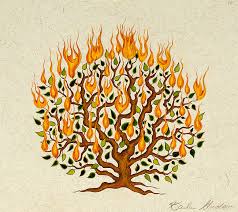Pesach in a Time of Crisis
Rabbi Ira F. Stone
Part 2
Today I want to focus on a small paragraph that is recited at the Seder, just before we commence the meal. It is likely one of the earliest elements that went into the construction of the Seder meal as it evolved to replace the actual sacrificial meal that characterized Pesach in the time of the Temple. The first century sage, Rabbi Gamliel, is associated with that transition. Most haggadot read:
Rabban Gamliel, taught: Those who have not explained these three things during the Seder have not fulfilled their obligation:
PESACH When the great Temple of Jerusalem was still in existence, our ancestors ate a special sacrificial offering called the Pesach. The word “Pesach” means to “pass over.” The offering was eaten as a symbol that God passed over the houses of the Israelites, as the Torah teaches, “You shall say: This is the Pesach offering we offer to God, because God passed over the houses of the Israelites when he destroyed the Egyptians, but our homes God saved.” (Exodus 12:27)
MATZAH Why do we eat matzah? To remember that even before our ancestor’s dough had time to rise, God was revealed to them and saved them. As the Torah teaches: And they baked the dough which they had brought from Egypt into matzah; it did not rise since they hurried out of Egypt, and they could not delay, nor had they prepared other provisions for themselves.” (Exodus 12:39)
MAROR Why do we eat bitter foods? To remember that the Egyptians, “embittered the lives of our ancestors with hard labor in mortar and brick, and in every manner of drudgery in the field and worked them ruthlessly in all their labor.” (Exodus 1:14)
As each of these statements is read it is customary to point at the three elements on the seder plate: the shank bone, representing the Pesach Offering, the Matzah and the Maror. It is this ritual act of pointing that makes this ritual so profound and, as I’ve said, forms the basis of the entire seder. It is, perhaps, the first example of what Rabbi Simcha Zissel of Kelm, the Mussar Master, calls Imaginative Projection.
Rabban Gamliel’s pointing at the elements on the seder plate imaginatively transforms the shank bone, matzah, maror, and in doing so, transforms the very reality of the experience. The shank bone becomes the Pesach offering in the Temple, which in turn had been an imaginative projection of the experience of redemption from Egyptian bondage. The matzah becomes the actual bread of affliction that we ate on leaving Egypt. The maror becomes the bitterness that was slavery itself. These transformations constitute the heart of the power of religious life.
This is not magic. In no case is the actual element thought to be transformed. However, in each case our perception of reality is transformed. We rarely can change the reality in which we live. However, we can change our perception of that reality, and needless to say, our attitude about it. This is, in my opinion, what has made the Seder so powerful through the ages. It is also an essential teaching for us in the present crisis.
We find ourselves powerless in the face of reality, but we are always and only responsible for our own mezeg avir, our internal “weather system.” By staying focused on the needs of others, by imaginatively projecting what others are experiencing in these difficult times, and focusing less on what we are experiencing, we may be able to weather this storm together — and be strengthened by it.
This is my prayer for our community and for the world. To whatever extent possible, Annie and I wish you all the most transformative of Pesach celebrations.
Chag Pesach Sameach,
Rabbi Ira Stone


